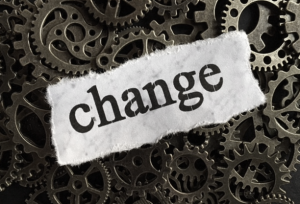Change Is Hard – Even on a Good Day. If it weren’t, all my bad habits would be gone.
Change in the workplace is no easier. As organizations evolve to meet the demands of a shifting future, change becomes inevitable. Whether it’s expanding operations, restructuring offerings, or improving a product, transformation requires doing things differently. Sounds simple enough: present a great idea and everyone will rally behind it. But we know that it rarely works that way.
Why? Because change often demands more than new processes. It asks people to think differently, act differently, and let go of what’s familiar. That’s no small ask. Imagine doing something the same way for years (and doing it well) only to be told it’s time to change. Cue the internal dialogue: What if I can’t adapt? What if I fail? What happens next? Suddenly, change isn’t just strategic, it’s emotional.
And emotion is powerful. At its best, it fuels passion, purpose, and momentum. But left unacknowledged, it can also stir fear, frustration, and resistance. These emotions are real and they matter.
Over the years, I’ve seen change done brilliantly. I’ve also seen it unravel. The difference? Leaders who understand that change isn’t just a business process, it’s a human one. Every person brings their own story, their own fears, and their own hopes to the table. That makes change deeply personal.
Even though there are really good change models, there’s no one-size-fits-all formula. But there is a path forward.
Leading successful change starts with trust, empathy, and a willingness to meet people where they are. If your change efforts are stalling, maybe it’s time to stop managing change and start connecting through it.
Because real change starts with getting personal.

